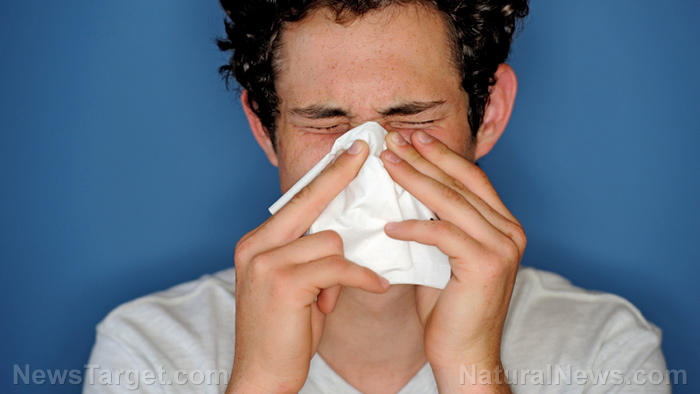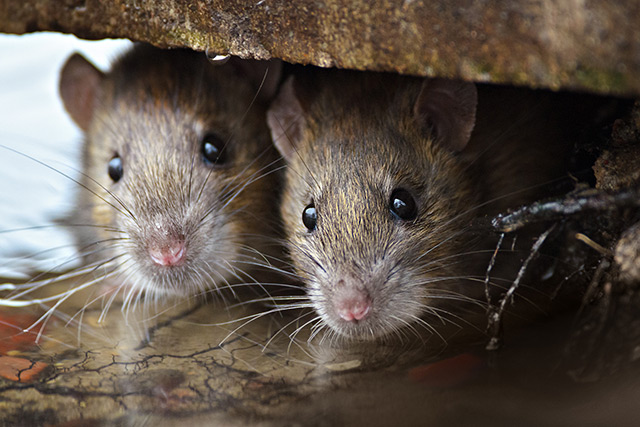Dust mite allergies: Symptoms, treatments and prevention

(Natural News) Allergies are uncomfortable and inconvenient. If you’ve been suffering from allergies and skin irritation all year round, the culprit may be right in your home: dust mites.
If you have dust mite allergies, you need to know the common symptoms of the condition and how to prevent allergy attacks.
What are dust mites?
Dust mites are microscopic insects that live in hidden spots throughout your home. They feed on dead human skin cells found in dust. Dust mites thrive in warm, humid environments between 68 and 77 F and dusty corners.
While dust mites can’t bite or sting, proteins from their feces and body fragments can still trigger allergies. It is believed that dust mites are the main trigger of year-round allergies and asthma.
Accidentally inhaling protein from dust mite feces or dead body parts can trigger allergy symptoms. These proteins and pieces cause allergic reactions by stimulating the body’s immune response, which causes symptoms like inflammation in either your airways or skin (depending on the point of contact), itching and sneezing.
When a reaction and inflammation occur in your airways, dust mite proteins can trigger asthma symptoms.
Dust mite allergy symptoms
Dust mite allergy symptoms may vary and they tend to have the same symptoms as seasonal allergies. You may have a dust mite infestation at home if you experience these symptoms throughout the year:
- Cough
- Itchy nose or throat
- Itchy, red, or watery eyes
- Itchy skin
- Postnasal drip (Occurs when your nose and throat continually produce mucus that eventually starts dripping down your throat from your nose. Symptoms include bad breath and an itchy, sore throat.)
- Runny and stuffy nose
- Sneezing
 | Discover how to prevent and reverse heart disease (and other cardio related events) with this free ebook: Written by popular Natural News writer Vicki Batt, this book includes everything you need to know about preventing heart disease, reversing hypertension, and nurturing your cardiac health without medication. Learn More. |
Additionally, dust mites can trigger asthma or asthma-like symptoms such as breathing difficulty, chest pain and tightness, wheezing and trouble sleeping (due to shortness of breath, coughing or wheezing).
Getting rid of dust mites in your home
Dust mites often hide in dusty fabrics. Check the following places for dust mites:
- Bedding (bed sheets, blankets, pillowcases) – Dust mites linger on bedding. Wash bedding at least once a week in hot water to kill mites.
- Curtains – Curtains house dust mites, particularly mites from dust kicked up into the air. Replace curtains with roller shades or window blinds, or wash them once a week in hot water. (Related: Follow these effective tips to improve air quality in your home.)
- Food – Studies have found that dust mites often hide in stored grains and flour. Store dried foods in tightly sealed jars after opening to limit exposure to dust mites.
- Mattresses – Mattresses hide a lot of dust mites since they don’t get washed regularly. Buy an allergen cover for mattresses to prevent exposure to mites.
- Pet bedding – Pet bedding may gather extra dust from animals that played outdoors and then lay down in their bedding. Wash pet bedding in hot water weekly.
- Wall-to-wall carpets and rugs – Dust mites also burrow into carpeting and rugs. You can vacuum and steam clean rugs (use hot steam), but it is better to replace carpeting with linoleum or another hard surface. Wash rugs in hot water or steam clean them once a week.
Keep your home dust mite-free by running an air conditioner or dehumidifier to keep the humidity at about around 50 percent. When it’s time to dust, use a damp cloth or rag. Using a dry duster will just spread dust and mites to other rooms.
Wear a mask while vacuuming and cleaning so you don’t accidentally inhale dust mites and allergens. Use a vacuum cleaner with a microfilter bag or a HEPA (high-efficiency particulate air) filter to trap allergens that get passed through the vacuum’s exhaust.
You can’t keep your home 100 percent dust-free, but cleaning regularly and washing fabrics weekly will significantly reduce dust mites and allergens.
Sources include:



